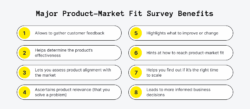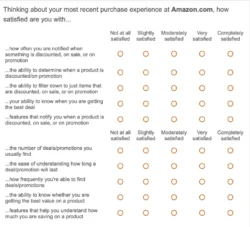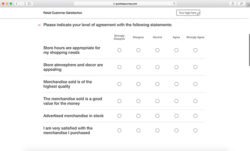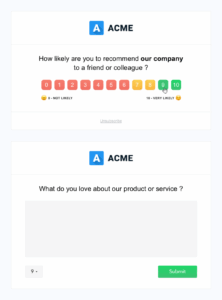Every successful product, no matter how innovative, thrives on understanding its users. Knowing what your customers think, how they use your product, and what improvements they desire is not just good practice; it is essential for sustained growth. Without this vital feedback, you are essentially navigating a complex market blindfolded, relying purely on intuition rather than solid data. This is where the power of targeted market research comes into play, providing clear insights into the minds of your audience.
One of the most effective tools in a market researcher’s arsenal for gathering this specific type of customer intelligence is a product survey. Crafting a survey that asks the right questions in the right way can unlock invaluable insights, helping you refine your offerings, identify new opportunities, and even predict future trends. But where do you start? The good news is, you don’t have to build one from scratch every time. Having a robust market research product survey template can save you immense time and ensure you cover all your bases, providing a structured approach to gathering the feedback you need.
Building a Powerful Product Survey: From Concept to Questions
So, you’re ready to dive into understanding your product’s performance from your users’ perspective. The first step in creating a truly powerful survey is defining your objectives. What specific information are you hoping to gather? Are you looking for feedback on a new feature, general satisfaction, pricing perception, or perhaps understanding pain points that lead to churn? Clearly outlining these goals will dictate the types of questions you ask and the depth of information you seek. Without clear objectives, your survey risks becoming a rambling collection of questions yielding vague, unactionable data.
Once your objectives are crystal clear, it’s time to think about your target audience. Who are you surveying? Is it existing customers, potential new users, or a specific demographic? Understanding your audience helps in tailoring the language, tone, and even the platform you use for your survey. For instance, a survey for tech-savvy early adopters might use different terminology than one for a general consumer base.
Now for the heart of the matter: the questions themselves. A good product survey balances various question types to get both quantitative data (numbers) and qualitative insights (opinions and experiences). Mixing multiple-choice, rating scales, and open-ended questions can provide a comprehensive picture. Avoid leading questions that push respondents towards a particular answer, and keep your questions concise and easy to understand. Remember, the easier your survey is to complete, the higher your response rate will be.
Key Elements to Include in Your Template
- Demographic questions to segment your audience (optional but often useful).
- Product usage frequency and duration.
- Satisfaction levels with various features or the overall product.
- Open-ended questions for suggestions, complaints, or positive feedback.
- Likelihood to recommend (Net Promoter Score type questions).
- Questions about unmet needs or desired future features.
Leveraging a well-designed market research product survey template means you’re not reinventing the wheel each time. It provides a foundational structure, ensuring you don’t overlook critical areas while still offering the flexibility to customize for specific product updates or market shifts. This systematic approach guarantees consistency in your data collection, making it easier to track changes and trends over time.
From Data Collection to Actionable Insights
Once your meticulously crafted survey is ready, the next phase involves distributing it and collecting responses. There are numerous channels available, ranging from email campaigns and in-app notifications to social media promotions and website pop-ups. The best channel depends on your target audience and where they are most accessible. Ensure your chosen method respects user privacy and offers a seamless experience, as friction can significantly reduce participation rates. Remember to set a clear timeline for response collection to keep your project on track.
As the responses start rolling in, the real work of analysis begins. This isn’t just about tallying numbers; it’s about interpreting what those numbers mean in the context of your product and market. Look for patterns, correlations, and outliers. Are certain features consistently rated low? Are there common themes emerging from the open-ended feedback? Tools for survey analysis can range from simple spreadsheets for smaller datasets to sophisticated statistical software for larger, more complex studies. Don’t shy away from cross-referencing your survey data with other metrics, like sales figures or customer support tickets, to gain a holistic view.
The ultimate goal of any market research product survey template is to generate actionable insights. Data is only valuable if it leads to informed decisions. Once you’ve identified key findings, translate them into clear recommendations for your product development, marketing, or customer service teams. For example, if many users express confusion about a specific feature, the action might be to redesign the UI or create a new tutorial. If a strong demand for a new feature emerges, it might influence your product roadmap.
Sharing your findings effectively is just as important as gathering them. Present your insights in a clear, concise manner, focusing on the implications and recommended actions. Visual aids like charts and graphs can make complex data more digestible for stakeholders. Remember, the journey from ideation to implementation of changes based on survey feedback is iterative. Regularly conducting product surveys ensures you remain responsive to your market, continuously improving your offerings and staying ahead of the competition.
Embracing a systematic approach to understanding your product’s performance is a cornerstone of sustainable business growth. By regularly tapping into the valuable perspectives of your users, you unlock a wealth of information that can guide everything from minor tweaks to major strategic shifts. This proactive engagement not only helps you build better products but also fosters a stronger, more loyal customer base who feel heard and valued.
Ultimately, the insights gained from thoughtful customer feedback transform guesswork into informed strategy. They empower you to make data-driven decisions that resonate with your audience, leading to increased satisfaction, higher retention, and a more robust presence in the market. Investing time and effort into this crucial aspect of product development will undoubtedly yield significant returns, paving the way for continued success and innovation.



